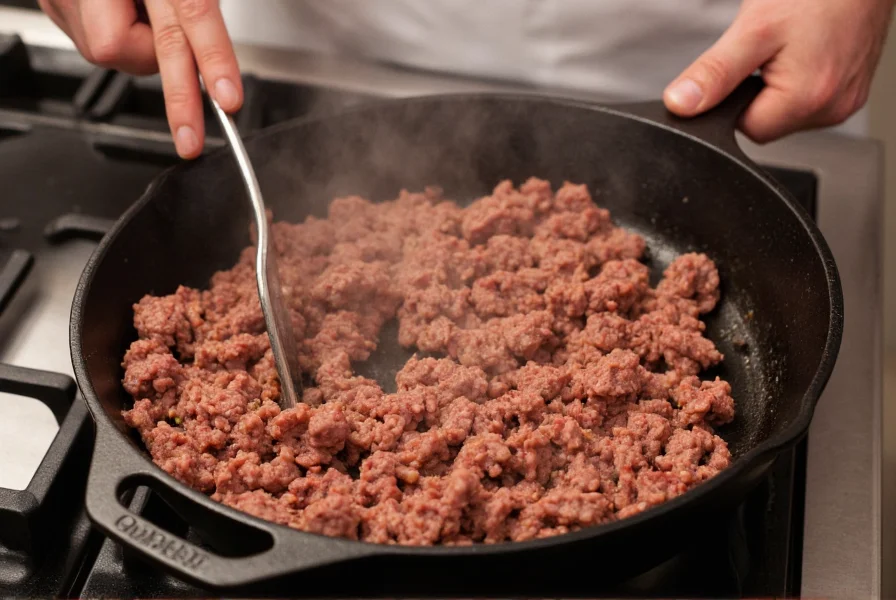When home cooks talk about chili TLC, they're describing the mindful approach to crafting chili that transforms it from a basic meal into something extraordinary. This isn't about following a rigid recipe but rather embracing the philosophy that great chili requires time, attention, and respect for the ingredients.
Understanding the TLC Approach to Chili Making
The "TLC" in chili preparation represents the extra effort that separates memorable chili from ordinary batches. Professional chefs and experienced home cooks know that chili isn't just thrown together—it's nurtured. The magic happens when you slow down the cooking process, allowing flavors to meld and deepen over time.
Unlike many quick weeknight meals, authentic chili rewards patience. The difference between good chili and exceptional chili often comes down to those additional hours of gentle simmering that transform separate ingredients into a harmonious whole. This is where the "tender loving care" concept becomes essential.
Essential Ingredients for Quality Chili
Starting with quality ingredients forms the foundation of chili TLC. While regional variations exist, certain elements remain consistent across excellent chili recipes:
| Ingredient Category | Quality Indicators | TLC Application |
|---|---|---|
| Meat selection | Fresh, well-marbled cuts; proper fat content | Browning in batches to develop flavor |
| Chili peppers | Vibrant color, firm texture, aromatic scent | Dry roasting before use to enhance complexity |
| Spices | Freshly ground, vibrant aroma, proper storage | Toasting before adding to release essential oils |
| Liquid base | Homemade stock or thoughtful store-bought alternative | Gradual addition to control consistency |
Step-by-Step Guide to Applying Chili TLC
1. Proper Meat Preparation
Take time to properly brown your meat in batches rather than overcrowding the pot. This Maillard reaction creates complex flavor compounds that form the flavor foundation. Rushing this step by adding too much meat at once causes steaming instead of browning, resulting in less flavorful chili.

2. Spice Toasting Technique
Before adding dried spices to your chili, toast them gently in a dry pan for 1-2 minutes. This simple step releases essential oils and transforms flat, one-dimensional spices into vibrant flavor contributors. Immediately grind toasted spices for maximum impact.
3. The Simmering Process
True chili TLC means committing to a minimum 2-3 hour simmer, with many traditional recipes calling for 4-6 hours. During this time:
- Maintain a gentle bubble—never a rolling boil
- Stir occasionally to prevent sticking
- Skim excess fat periodically for cleaner flavor
- Taste and adjust seasoning at multiple intervals
Common Mistakes That Defeat Chili TLC
Even with good intentions, certain pitfalls can undermine your chili TLC efforts:
- Rushing the cooking process - Setting chili to high heat to "speed things up" creates harsh, unbalanced flavors
- Overloading with ingredients - Too many competing elements prevents flavor development
- Adding all seasoning at once - Proper chili seasoning happens in stages throughout cooking
- Skipping the resting period - Chili always tastes better the next day after flavors fully integrate
Adjusting Chili for Different Preferences
Part of chili TLC involves understanding how to tailor your batch to different palates. Rather than creating one rigid recipe, prepare your chili as a base that can be customized:
- For heat control: Serve with additional hot sauce or fresh chilies on the side
- For texture preferences: Offer toppings that add crunch or creaminess
- For dietary needs: Have vegetarian or gluten-free options available
This approach demonstrates true chili TLC—considering your guests' preferences and making thoughtful adjustments rather than serving a one-size-fits-all batch.
Storage and Reheating for Maximum Flavor Preservation
Chili TLC extends beyond the initial cooking process. Proper storage and reheating techniques ensure your carefully crafted chili maintains its quality:
- Cool chili rapidly by placing the pot in an ice bath before refrigerating
- Store in airtight containers with minimal headspace to prevent oxidation
- Reheat gently over medium-low heat, adding small amounts of liquid as needed
- Consider finishing reheated chili with a splash of vinegar or fresh herbs to brighten flavors
Conclusion: The Essence of Chili TLC
Chili TLC represents more than just a cooking method—it's an attitude toward food preparation that values quality over speed, depth over convenience, and mindfulness over autopilot cooking. By applying these principles, you transform chili from a simple meal into a culinary experience that shows genuine care for both the process and the people who will enjoy the results.
Remember that the most important ingredient in chili TLC isn't listed in any recipe—it's the willingness to slow down, pay attention, and invest time in creating something truly special. Whether you're cooking for family, friends, or just yourself, this approach consistently yields chili that satisfies both the stomach and the soul.










 浙公网安备
33010002000092号
浙公网安备
33010002000092号 浙B2-20120091-4
浙B2-20120091-4